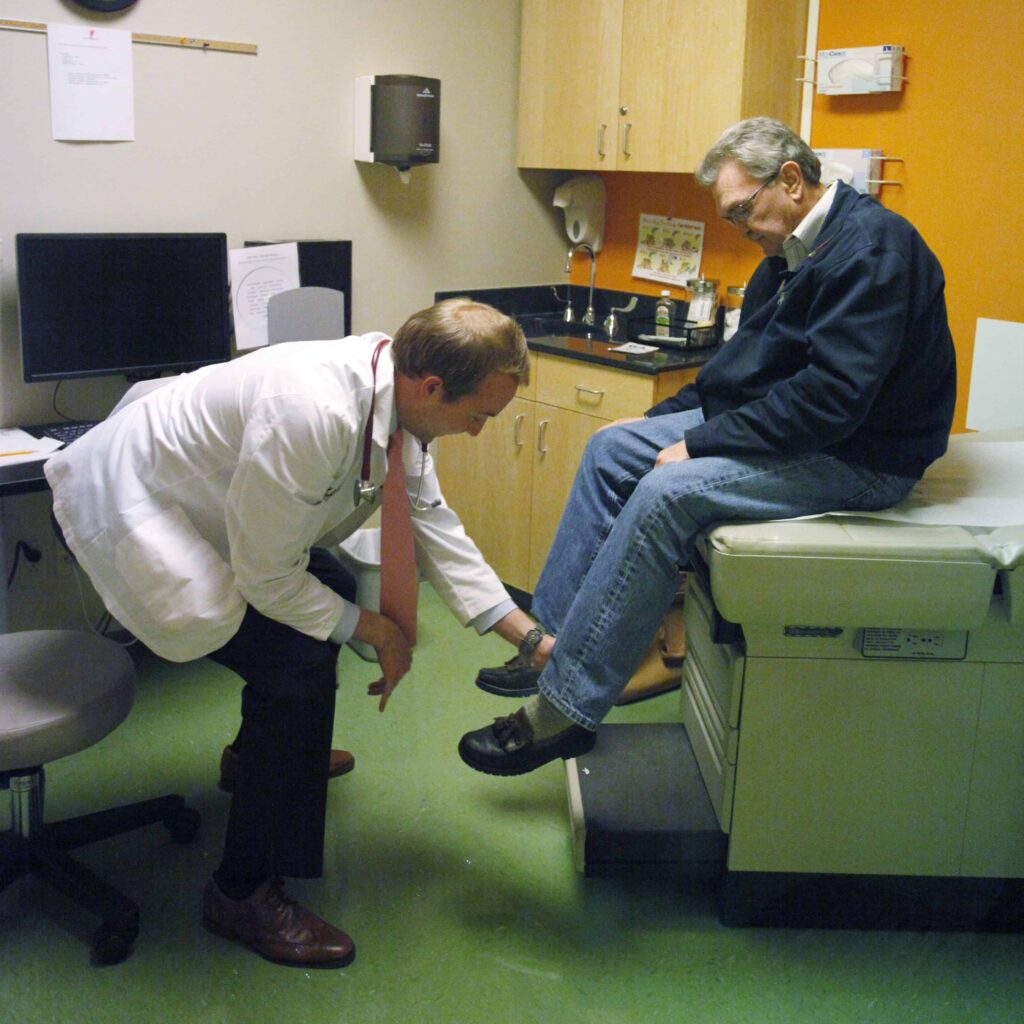
“The Simulated/Standardized Patient (SP) is a person who has been carefully coached to simulate an actual patient so accurately that the simulation cannot be detected by a skilled clinician. In performing the simulation, the SP presents the gestalt of the patient being simulated; not just the history, but the body language, the physical findings, and the emotional and personality characteristics as well.”
From HS Barrows
Simulated (Standardized) Patients and Other Human Simulations, 1987
At the Clinical Skills Center and Simulation Center, The Standardized Patient/Person (SP) is a person who has been trained to simulate an actual healthcare professional, family member or patient so accurately that the simulation cannot be detected by a skilled health care worker. SPs are specifically trained to not only represent the context of a situation or problem, but to also consistently recreate that same situation or problem each time they encounter a Skills Center learner.
Orientation
Each SP in the UAMS Centers for Simulation Education program is expected to attend a group orientation session. During orientation, the Healthcare Simulation Educators (HSE) all facets of program participation are covered, from learning the objectives of the cases, how you will be trained, assessment of communication skills, to the physical exam, paperwork and payroll.
Training
New SPs should expect to put in several hours of training and rehearsal prior to working with students. You will be provided with a patient scenario to study at home to help standardize the simulation. You will need to think about the scenario and practice the specific verbal and non-verbal behaviors appropriate for the role. Training and rehearsal may also involve the following: reading and studying the case information, viewing video recordings of previous encounters, observation of others performing the role in rehearsal and/or an exam, informal role-playing with members of the Clinical Skills Center team, and formal role-playing with faculty members. The primary goal involves two components: consistent and realistic portrayal of the patient role, and consistent and accurate completion of an assessment checklist.
After learning the roles, SPs will go through mock encounters or dress rehearsals with faculty. Feedback will be provided to the SPs so that the content of the cases and the portrayal of the patient are realistic. In this way, we can present the most realistic, reliable, and accurate cases possible.
Training is scheduled according to SP and SPE availability. We strive to train in small groups whenever possible, since this is the best way to “standardize” the performance and the checklists.
What can a SP do in an encounter/scenario?
- Record what happens
- Give information
- Reproduce history & physical
- Give feedback
- Create a real experience
What can a SP not do in an encounter/scenario?
- Make a judgment about medicine
- Have invasive medical procedures
- Interpret clinical reasoning
- Be defibrillated
- Simulate surgery
Who is hired for SP work?
People with many different backgrounds can be employed as SPs, including librarians, school teachers, retired college professors, actors, medical technicians, retired businessmen, college students, accountants, and homemakers. In addition, we sometimes hire people specifically for their particular medical histories or real physical findings.
How to Apply?
If you would like to become a standardized patient, please download and fill out the SP Application form or fill out the online version linked below. You may also call 501-603-1920. Or email one or all of the following:
UAMS CAMPUS: Rachel Royal RERoyal@uams.edu
UAMS CAMPUS: Crystal Hamilton SLHamilton@uams.edu
UAMS CAMPUS: William Wagner WRWagner@uams.edu
NW AR CAMPUS: Jamie Thornton JThornton4@uams.edu
DISCLAIMER: Standardized Patient (SP) is contractual employment with UAMS, and is not part-time or full-time employment. Contractual employees: “independent contractors,” “contract workers,” “freelancers” or “work-for-hire staffers,” are hired, for a specific project or timeframe for a set fee. Projects are Event based and short-term.
